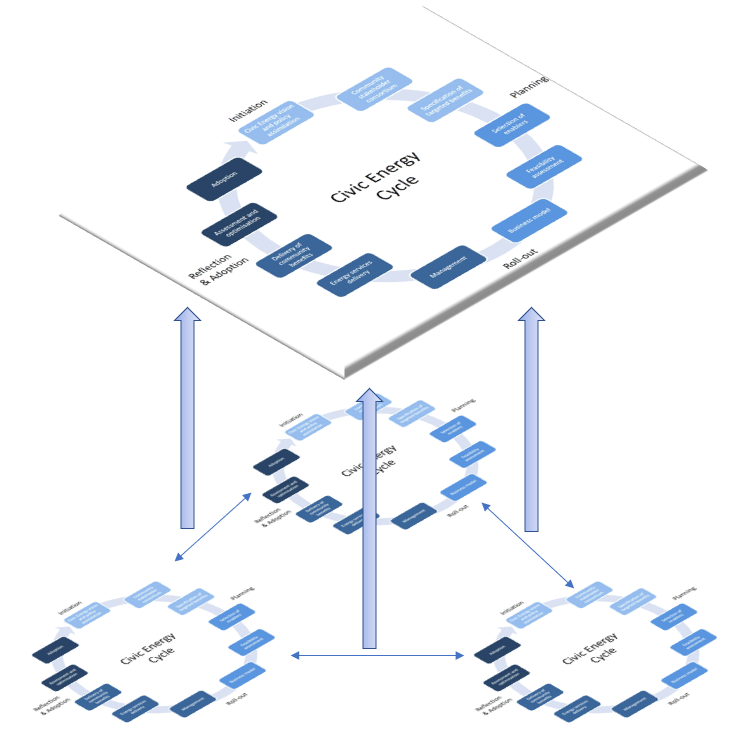Building on the structure of the feasibility assessment, assessing and optimizing your Civic Energy initiative requires structured self-monitoring. In order to get the most of your renewable energy sources, we present you here market aggregation strategies.
Market aggregation strategies
Connect and cluster small-scale civic energy initiatives to create civic energy markets
- Use same capacities in different projects and initiatives. Ex. Knowledge.
Do not invent the wheel twice!
Take help from people with for example knowledge and experience from other energy communities projects. There are more capacities that can be beneficial to use in several project. - Lager load if we cluster and go together.
If several energy communities can cluster and connect with each other the load in the grid is larger and the possibility to impact might be easier.
For example; flexible load markets, an example is "Coordinet" in Uppsala. - Can even the power peak if the demand curve is within different usage and time.
If different loads and consumers in an energy community or even within several energy communities work together, the power peaks can decrease. If the loads need energy in different periods of time during the day and the demand is more even, will there be fewer power peaks in the grid. - Louder voice together, easier to impact if you are a unit of more initiatives.
If more people go together and say the same thing it is more probable that someone will listen. To overcome obstacles and make the policies and legislation easier for energy community it is important to inspire and impact authorities
As an aggregating measure to facilitate the uptake of civic energy structures in the energy market, another concept has been developed by the COBEN consortium: The Civic Energy Superstructure
Civic Energy 'Superstructure' Aggregation
While still only a broad concept, the idea behind market aggregation can be considered through the Civic Energy Cycle lens - or rather by expanding the Civic Energy Cycle as a representation for the processes involved in developing a civic energy community.
As visualised in the image below, connecting and establishing sharing networks between a number of separate energy community can form the foundation for the creation of a join civic energy structure, which could serve as an aggregator of individual initiatives.
While fragmented, individual civic energy structures may not be able to pose a significant impact on the incumbent energy system, a combination of multiple civic energy initiatives under a joint civic energy roof could present a significant contribution to the energy market as a whole.
The requirements and processes involved in this concept of a 'civic energy superstructure' as well as the interdependencies and the mutual influence between a superstructure and its underlaying civic energy communities should be further developed and investigated in the future.


